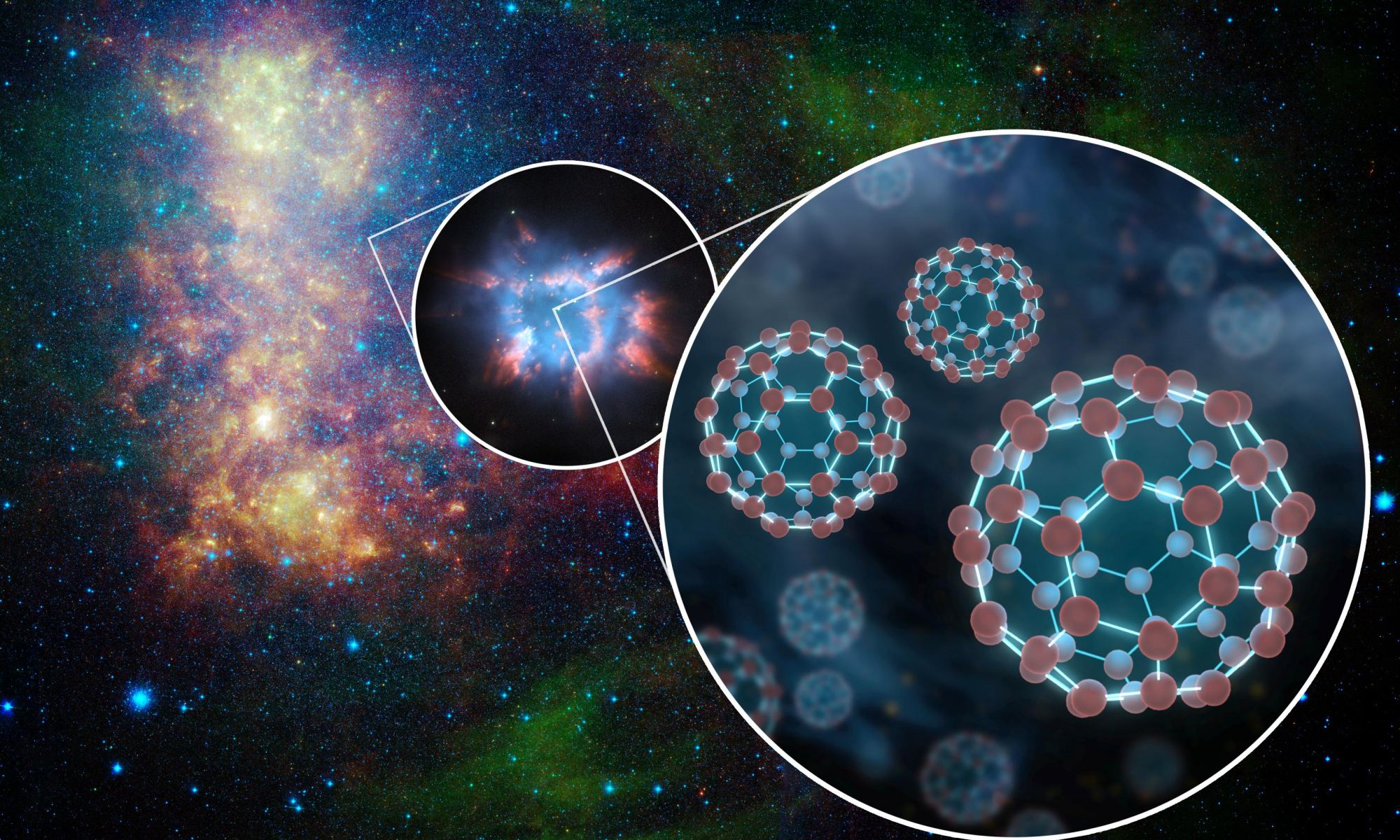Week9: Space + Art
We often associate space with "huge" and nanotechnology with "small". However, Professor Vesna points out that the seemingly opposite two things are connected: nanotechnology has played an essential role in space study. Specifically, the detection of a helium structure called buckyballs supported the theory that meteorites frequently landed on Earth during early times ("8 space pt1").
Gamma-ray bursts (GRB), phenomenons discovered 50 years ago, are believed to arise from catastrophic occurrences involving stars in distant galaxies, events thought to produce new black holes. Currently, orbiting satellites such as NASA's Swift and Fermi missions detect GRBs approximately once a day on average (Reddy).
Gamma Ray Bursts
Noordung envisioned a geostationary space station composed of three components: a solar power station, an observatory, and a habitable wheel. Despite decades of contemplation on space habitation, this concept remains groundbreaking but unrealized; the rotating habitable wheel, which generates artificial gravity through centrifugal force, represents an optimal and straightforward solution for enabling long-term human habitation in a weightless environment (KSEVT).
Multiple artworks are inspired by the exploration of space, such as the Mars patent and Chesley Bonestell image galleries. The Mars patent represents a groundbreaking concept—the "First Inter-Planetarian Exhibition Space on Mars"—which showcases the visionary fusion of art and space exploration ("Mars Patent: Home"). On the other hand, the Chesley Bonestell Galleries feature a captivating collection of artworks that range from realistic depictions to imaginative, fantasy-like creations, illustrating the deep interconnection between space and art (Bonestell).
Image Sources
Gough, Evan. “Hubble Finds Buckyballs in Space.” Universe Today, 26 June 2019, www.universetoday.com/142644/hubble-finds-buckyballs-in-space/.
Morrow, Ashley. “NASA’s Swift Spots Its Thousandth Gamma-Ray Burst.” NASA, 6 Nov. 2015, www.nasa.gov/feature/goddard/nasas-swift-spots-its-thousandth-gamma-ray-burst.
“Bonestell - Image Gallery.” Chesley Bonestell, www.bonestell.org/Image-Gallery.aspx#images-38. Accessed 2 June 2023.
Works Cited
Vesna, Victoria. "8 space pt1". Bruin Media Reserve, uploaded by UC Online, https://bruinlearn.ucla.edu/courses/160989/pages/unit-9-view?module_item_id=5946351
“Mars Patent: Home.” MARS PATENT: Home, www.mars-patent.org/#. Accessed 2 June 2023.
“Bonestell - Image Gallery.” Chesley Bonestell, www.bonestell.org/Image-Gallery.aspx. Accessed 2 June 2023.
“Building.” KSEVT, www.ksevt.eu/about. Accessed 1 June 2023.
Reddy, Francis. “NASA Looks Back at 50 Years of Gamma-Ray Burst Science.” NASA, 1 June 2023, www.nasa.gov/feature/goddard/2023/nasa-looks-back-at-50-years-of-gamma-ray-burst-science.


Hello, Great post! I love your analysis of this topic. The connection between space, nanotechnology, and art is fascinating. Nanotechnology's role in space study, such as detecting buckyballs, highlights their interconnection. Gamma-ray bursts, detected daily by satellites, shed light on catastrophic stellar events. Art inspired by space, exemplify the fusion of creativity and exploration. The post provides valuable insights into these interwoven domains.
ReplyDelete